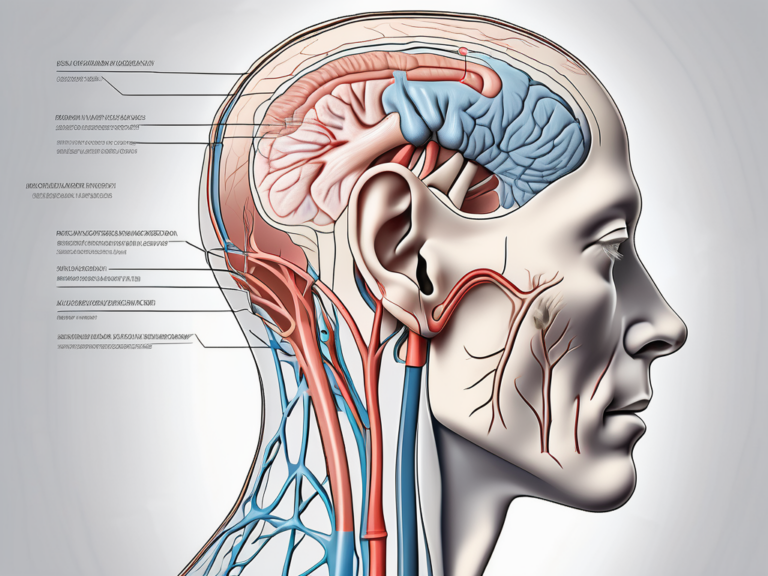Avoiding Wardrobe Malfunctions at Work: Tips for a Professional and Polished Look
When it comes to the workplace, your appearance plays a crucial role in how you are perceived by others. Dressing professionally and appropriately not only helps establish your credibility, but it also shows that you respect yourself and the company you work for. To avoid any wardrobe malfunctions that could tarnish your professional image, follow these tips for a polished and put-together look.
Understanding the Importance of Professional Attire
The way you dress at work conveys a powerful message about your professionalism and competence. Your clothing choices can reflect your commitment to the job and your understanding of the company culture. When you dress appropriately, you not only create a positive impression but also contribute to a harmonious work environment.
The Role of Clothing in the Workplace
Clothing in the workplace serves both functional and symbolic purposes. From a functional standpoint, it provides comfort, protection, and practicality. Symbolically, it communicates your role, conveys professionalism, and helps establish authority and trust. Understanding this dual role is essential in ensuring you make the right clothing decisions.
First Impressions and Professional Image
First impressions are formed within seconds of meeting someone. Your appearance is the first thing people notice, so it’s vital to make a positive impact from the start. By dressing professionally, you instantly establish credibility and create an image of competence and trustworthiness. This initial impression sets the tone for how others perceive you throughout your professional interactions.
Moreover, dressing professionally not only influences how others perceive you but also affects your own mindset and confidence. When you put effort into your appearance and dress in a manner that aligns with the expectations of your workplace, you feel more prepared and ready to tackle the challenges ahead. It boosts your self-esteem and allows you to project a sense of authority and capability.
Additionally, professional attire plays a significant role in creating a sense of unity and cohesion within a team or organization. When everyone adheres to a dress code that reflects the company’s values and image, it fosters a sense of belonging and professionalism. It eliminates distractions and allows colleagues to focus on their work without being influenced by inappropriate or distracting clothing choices.
Furthermore, professional attire can also contribute to a positive work environment by promoting respect and professionalism among colleagues. When individuals dress professionally, it sets a standard of behavior and encourages others to follow suit. It creates an atmosphere of mutual respect and professionalism, where everyone is focused on achieving their goals and maintaining a high level of performance.
Identifying Common Wardrobe Malfunctions
While it’s important to dress professionally, it’s equally crucial to be aware of potential wardrobe malfunctions that can detract from your polished look. By familiarizing yourself with these common issues, you can take proactive measures to avoid them.
Clothing Fit Issues
One of the most common wardrobe malfunctions is wearing ill-fitting clothes. Whether they are too tight, too loose, or simply not tailored to your body, ill-fitting garments can undermine your professional appearance. Imagine this: you’re at an important meeting, confidently presenting your ideas, when suddenly, the button on your shirt pops open, revealing more than you intended. Not only is this embarrassing, but it also distracts from your expertise and credibility.
To avoid this, invest in clothes that are tailored to your measurements or have them altered by a professional. When you wear clothes that fit you perfectly, you exude confidence and leave no room for wardrobe mishaps. Remember, a well-fitted suit or dress not only enhances your appearance but also boosts your self-assurance, allowing you to focus on what truly matters – your skills and abilities.
Inappropriate Attire for the Office
Another common mistake is wearing inappropriate attire for the office. Clothing that is too revealing, casual, or trendy can send the wrong message and compromise your professionalism. Picture this: you arrive at your workplace, ready to conquer the day, but your choice of clothing raises eyebrows and invites whispers among your colleagues. Suddenly, your credibility is called into question, and your chances of being taken seriously diminish.
Take the time to understand your company’s dress code policy and adhere to it. If in doubt, err on the side of caution and dress more conservatively. Remember, your appearance is a reflection of your commitment to your job and your respect for the organization. By dressing appropriately, you demonstrate your professionalism and dedication to maintaining a positive work environment.
Additionally, it’s essential to consider the cultural and social norms of your workplace. Different industries and organizations may have varying expectations when it comes to attire. For example, a creative agency may encourage more casual and trendy outfits, while a law firm may require a more formal and traditional dress code. By understanding and aligning with these expectations, you not only fit in seamlessly but also showcase your adaptability and awareness of your professional surroundings.
Tips to Avoid Wardrobe Malfunctions
Preventing wardrobe malfunctions requires careful consideration and planning. Follow these tips to ensure you maintain a professional and polished look:
While choosing the right fit is essential, it’s also important to understand the importance of fabric quality. Opting for high-quality materials not only ensures durability but also enhances the overall appearance of your outfit. Fabrics like silk, linen, and wool can elevate your look and add a touch of sophistication. Additionally, paying attention to the construction of the garment, such as reinforced seams and proper stitching, can help prevent any embarrassing mishaps.
Choosing the Right Fit
When shopping for work clothes, prioritize finding items that fit well and flatter your body type. Pay attention to details such as shoulder seams, sleeve length, and pant length. Taking the time to find the right fit will ensure you look your best and feel confident in your appearance.
Furthermore, accessorizing strategically can make a significant difference in avoiding wardrobe malfunctions. Adding a belt to cinch your waist or wearing a well-fitted blazer can help create a more tailored and put-together look. These accessories not only add style but also provide an extra layer of security, keeping your outfit in place throughout the day.
Dressing for Your Body Type
Understanding your body type is crucial in selecting clothes that enhance your assets and downplay any areas you’re less confident about. Experiment with different styles and silhouettes to find what works best for you. Remember, dressing for your body type is about celebrating your uniqueness rather than conforming to societal standards.
Moreover, paying attention to the occasion and dress code is vital in avoiding any potential wardrobe malfunctions. Different settings call for different attire, so it’s essential to dress appropriately. Whether it’s a formal business meeting or a casual office gathering, understanding the expectations and adapting your outfit accordingly will ensure you make a lasting impression for all the right reasons.
Building a Professional Wardrobe
A well-curated wardrobe sets the foundation for a polished and professional look. Focus on investing in high-quality pieces that are versatile and timeless, allowing you to create a variety of outfits without constantly shopping for new items.
But what exactly are the essential pieces that every professional should have in their work wardrobe? Let’s delve deeper into this topic and explore the key elements that can elevate your style in the workplace.
Essential Pieces for a Work Wardrobe
Start by building a collection of essential workwear pieces, such as tailored trousers, a crisp white blouse, a well-fitted blazer, and classic pumps. These staples can form the basis of countless professional outfits and can be easily mixed and matched with other items.
However, don’t limit yourself to just these basics. Consider adding a few statement pieces that reflect your personal style and add a touch of uniqueness to your outfits. A bold-colored blazer or a patterned skirt can inject personality into your professional attire without compromising on professionalism.
Investing in Quality Over Quantity
When building your professional wardrobe, prioritize quality over quantity. While it may be tempting to fill your closet with inexpensive clothing, investing in high-quality items will save you money in the long run. Quality pieces not only last longer but also give off a more polished and professional appearance.
But what makes a garment high-quality? Look for well-constructed pieces made from durable fabrics that can withstand the test of time. Pay attention to details such as stitching, buttons, and linings, as these can be indicators of a garment’s quality. Remember, a well-made blazer or a pair of trousers can be a lifelong companion in your professional journey.
Additionally, consider the importance of fit when investing in quality pieces. A perfectly tailored blazer or a pair of trousers can instantly elevate your look and make you feel confident and put-together. Don’t hesitate to seek the help of a professional tailor to ensure that your clothes fit you impeccably.
By focusing on quality over quantity and carefully selecting essential pieces that suit your style, you can build a professional wardrobe that not only makes getting dressed in the morning a breeze but also leaves a lasting impression in any professional setting.
Maintaining Your Professional Wardrobe
A well-maintained wardrobe ensures that you always look put-together and professional. Paying attention to the care and upkeep of your clothing will extend its lifespan and preserve its quality.
But let’s dive deeper into the world of professional wardrobe maintenance. It’s not just about following care instructions; there are additional steps you can take to keep your clothes looking their best.
Proper Care for Different Fabrics
Each fabric requires specific care to keep it looking its best. Familiarize yourself with the care instructions for different fabrics and follow them accordingly. This can include methods such as handwashing, dry cleaning, or using special detergents or fabric softeners.
However, there are some insider tricks that can help you go the extra mile in caring for your garments. For example, did you know that hanging your clothes to dry instead of using a dryer can prevent shrinkage and maintain their shape? Or that using a steamer can remove wrinkles without subjecting your clothes to excessive heat?
Regular Wardrobe Checks and Updates
Periodically assess your wardrobe to ensure that your clothes are still in good condition and meet your current style needs. Remove any items that are worn out, ill-fitting, or no longer align with your professional image. Consider donating or selling these items and use the proceeds to invest in new pieces that better suit your style.
But let’s not forget about the power of accessories. They can breathe new life into your existing wardrobe, allowing you to create fresh and exciting outfits without breaking the bank. A statement necklace, a colorful scarf, or a stylish belt can instantly transform a basic outfit into a fashion-forward ensemble.
So, take the time to not only care for your clothes but also explore ways to elevate your professional style. With a little extra effort and attention to detail, you’ll be able to maintain a wardrobe that not only looks great but also reflects your unique personality and professionalism.
Dressing for Different Work Occasions
Understanding the appropriate dress code for different work occasions is essential to maintain a professional image. While dress codes may vary depending on the industry and specific event, these general guidelines can help you navigate various work situations.
When it comes to dressing for work, there are two common dress codes that you should be familiar with: business casual and business formal. Business casual attire typically allows for a more relaxed and comfortable dress code, while business formal requires a stricter and more polished appearance. It’s crucial to understand the expectations for each dress code and dress accordingly to avoid any potential wardrobe mishaps.
Business Casual: Striking the Right Balance
Business casual dress code offers a more relaxed and laid-back approach to professional attire. However, it’s important to strike the right balance between being too casual and too formal. Opt for well-fitted trousers or skirts paired with a button-down shirt or blouse. You can also incorporate a blazer or a cardigan for a more polished look. Avoid wearing jeans, t-shirts, or sneakers, as they are typically considered too casual for a business casual setting.
Business Formal: Exuding Professionalism
Business formal dress code demands a more sophisticated and professional appearance. This dress code is often required for important meetings, presentations, or formal events. Men should opt for a tailored suit in a conservative color, paired with a crisp dress shirt and a tie. Women can choose between a tailored pantsuit or a knee-length skirt suit, paired with a blouse or a tailored dress. It’s important to pay attention to the details, such as polished shoes, well-groomed hair, and minimal accessories.
Dressing for Work Events and Meetings
Work events and meetings often require a more professional and put-together look. Pay attention to the purpose, location, and formality of the event. Dressing appropriately will ensure you make a positive impression on colleagues, clients, and superiors.
For formal work events, such as conferences or gala dinners, opt for a more formal attire. Men can choose a well-tailored tuxedo or a dark suit, paired with a crisp white shirt and a classic tie. Women can opt for an elegant cocktail dress or a formal pantsuit, paired with sophisticated accessories. It’s important to strike a balance between looking stylish and professional.
When it comes to work meetings, it’s essential to dress in a way that reflects your professionalism and competence. Choose an outfit that is comfortable yet polished, allowing you to exude confidence. Pay attention to the details, such as ironed clothes, well-maintained shoes, and a neat hairstyle. Remember, dressing appropriately for work events and meetings not only shows respect for the occasion but also helps you establish a positive and credible image in the workplace.
Navigating Dress Codes in Diverse Work Cultures
In today’s increasingly diverse work environments, it’s essential to understand and respect different dress codes and cultural norms. What may be acceptable in one office may not be appropriate in another. Take the time to familiarize yourself with the specific expectations of your workplace, especially when working in international or multicultural teams.
Understanding Corporate Dress Codes
Corporate dress codes can vary significantly, ranging from formal and conservative to more casual and creative. Understand the specific requirements of your company and department and follow them diligently. This shows respect for your organization’s values and helps maintain a professional atmosphere.
Adapting to Casual Work Environments
Some workplaces have adopted a more casual dress code, which can blur the line between professional and personal style. While this may offer more flexibility, it’s still important to dress in a way that reflects the company’s image and values. Avoid overly casual or sloppy attire and aim for a polished and put-together look.
Final Thoughts on Wardrobe Management at Work
Your wardrobe choices play a significant role in your professional success. A polished and professional appearance not only helps you make a positive impression but also boosts your confidence and sets the stage for career growth.
The Impact of a Polished Look on Career Growth
A polished and put-together appearance can enhance your professional reputation and open doors for career advancement. It shows that you take your role seriously and are committed to excellence. As you climb the corporate ladder, your appearance becomes increasingly important in shaping others’ perception of your capabilities and potential.
The Balance Between Style and Professionalism
Finding the balance between expressing your personal style and maintaining professionalism can sometimes be a challenge. Remember that dressing professionally does not mean sacrificing your unique style. With a well-curated wardrobe and a good understanding of your workplace’s expectations, you can confidently showcase your personal style while still projecting professionalism.
In conclusion, avoiding wardrobe malfunctions at work is essential for maintaining a professional and polished look. By understanding the importance of professional attire, identifying common wardrobe malfunctions, following tips to avoid them, building a professional wardrobe, and navigating dress codes, you can present yourself as a competent and credible professional. Remember, your appearance is a powerful tool that can help you succeed in the workplace and leave a lasting impression on colleagues and clients alike.






